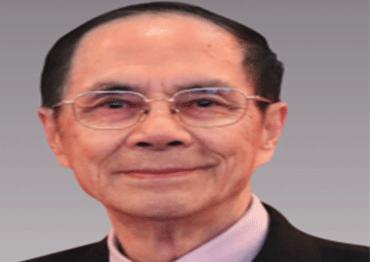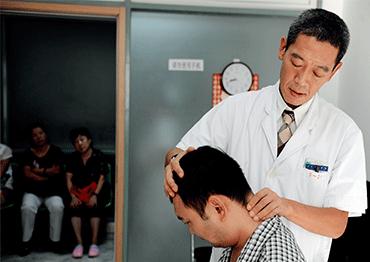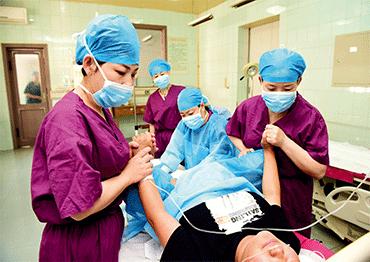In 1979, Han Jisheng, an academician at the Chinese Academy of Sciences and a pioneer of Chinese pain studies, went to the US for a meeting. It was there he first heard that it is unnecessary for patients to tolerate chronic pain. Back then, chronic pain was a given for many patients in China, particularly those suffering from cancer.
In 1992, the Chinese Association for the Study of Pain (CASP) was established. That same year, the Ministry of Health released a document and turned many anesthesiology departments into clinical departments where one of the major functions is pain management. A growing number of doctors with a background in anesthesiology offered outpatient services to treat pain.
“Few people knew about these outpatient services. The patients came to consult us after they saw flyers in the hospital corridor,” Xiong Donglin, dean of the pain clinic at Nanshan Hospital in Shenzhen, Guangdong Province, told NewsChina.
Han Jisheng said that when he first brought chronic pain treatment to China, he had to organize doctors from disciplines such as anesthesiology, orthopedics and neurology to study the treatments. Lacking funds and staff, he found it difficult to put together a team.
In 1995, CASP received a donation of US$100,000 from a pain research institute in France. With the funding, Peking University Health Science Center founded the Sino-French Pain Treatment Center, which provided 18 inpatient beds. Since then, the center has launched 13 training programs to train healthcare workers in pain relief.
In 2004, the International Association for the Study of Pain launched the first Global Day Against Pain to raise awareness that pain relief is a basic right for patients. In 2007, China’s Ministry of Health announced that major hospitals could establish a pain department. Han Qide, vice chairman of the Standing Committee of the National People’s Congress, said at the news conference that these departments were not a prerequisite to treat pain, but hospitals should study chronic pain after accumulating the medical resources.
Han Jisheng told NewsChina that “the establishment of pain clinics in hospitals is a strategic step. China is one of the global leaders in pain study and clinical treatment.”
“Pain clinics have the function of bringing together different departments to consult on the treatment of chronic pain,” Fan Bifa, head of the pain department at the China-Japan Friendship Hospital, told NewsChina.
In 1989, Fan started offering outpatient consultations for pain sufferers at the hospital.
Xiong Donglin said that the treatment of chronic pain requires cooperation from multiple departments and tailor-made training programs.
“Training was previously done in the anesthesiology department. It’s not enough for doctors to just spend two or three months in the pain clinic,” he said.
Nanshan Hospital has senior pain specialists. As a training center for pain clinicians, the hospital offers training programs for doctors from across the country. So far this year, at least 600 doctors and 49 nurses have been trained in pain alleviation at the hospital for three months.
Song Xuejun, director of the Pain Medicine Center at Nanfang University of Science and Technology, said that more pain management training programs are being offered by medical schools and hospitals. However, it is time to standardize these programs to avoid low-level repetitive training and ensure they are recognized across the board.
“Chronic pain is unlikely to be completely eradicated through one traditional medical discipline,” he said. “It requires special training programs featuring content from a variety of clinical subjects.”
Song added that it is necessary to offer courses on pain alleviation at medical schools. In March 2015, pain medicine was offered for the first time to undergraduate students of medical science at Peking University. Song was the chief designer of the teaching program. After joining Nanfang University of Science and Technology, he opened up the study of pain medicine to all students of the university regardless of discipline.
“Everyone will experience some kind of pain, and if the public or at least college graduates are aware of pain management, public health will significantly improve,” he told NewsChina. “Doctors in pain management clinics should switch their attention to patients rather than diseases.”

 Old Version
Old Version


